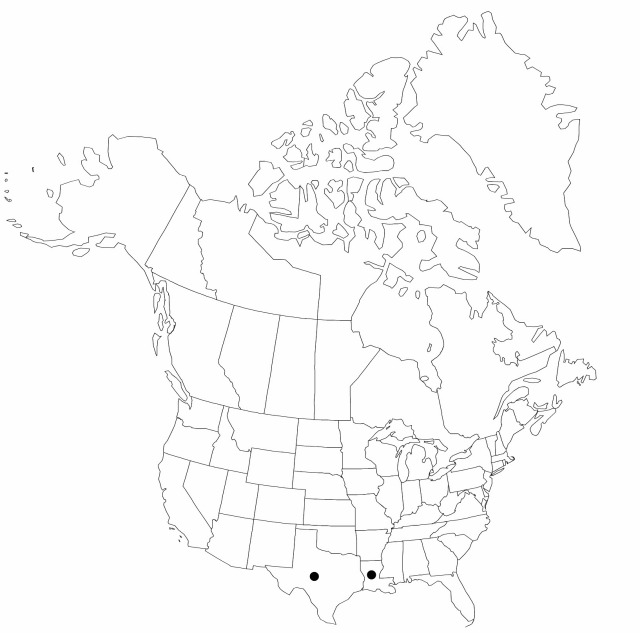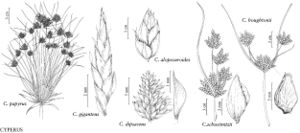Cyperus giganteus
Enum. Pl. 2: 364. 1805.
Herbs, perennial, rhizomatous, stout. Culms roundly trigonous, 200–350 cm × 15–50 mm, glabrous. Leaves bladeless. Inflorescences: spikes loosely cylindric, 15–40 × 8–16 mm; rays 5–8, ascending to erect, stiff,20–30 cm; 2d order rays 5–15 cm; bracts 10–12, ascending at 30–60°, flat, (8–) 20–45 cm × 4–12 mm; 2d order bracts (5–)15–25 cm × 1.5–5 mm; rachilla persistent, separating laterally, remaining firmly attached basally, wings 0.3–0.4 mm wide. Spikelets (15–)50–80, slightly compressed, linear, ± quadrangular, 5–12 × 0.6–1.4 mm; floral scales 8–20, appressed, reddish beside 5-ribbed green medial part, white to hyaline near margins, ovate, 1.8–2.2 × 1.2–1.5 mm, apex acute to obtuse. Flowers: anthers 0.7–1 mm (connective prolonged beyond anther as red subulate appendage 0.2–0.5 mm, its apex sometimes setose); styles 0.2–0.5 mm; stigmas (0.8–)1.2–1.8 mm. Achenes pale brown, sessile, oblong, 0.9–1 × 0.4–0.5 mm, apex scarcely apiculate, surfaces puncticulate.
Phenology: Fruiting summer.
Habitat: Stream banks, marshes
Elevation: 0–10 m
Distribution

Introduced; La., Tex., Mexico, West Indies, Central America, South America.
Discussion
Cyperus giganteus was erroneously reported from Florida, a misidentification of C. papyrus (R. R. Haynes and A. Lasseigne 1969).
Recently, some nurseries specializing in water plants have begun to offer C. giganteus under the name “Mexican papyrus.” Escaped cultivated plants may be expected in southeastern and southwestern United States.
